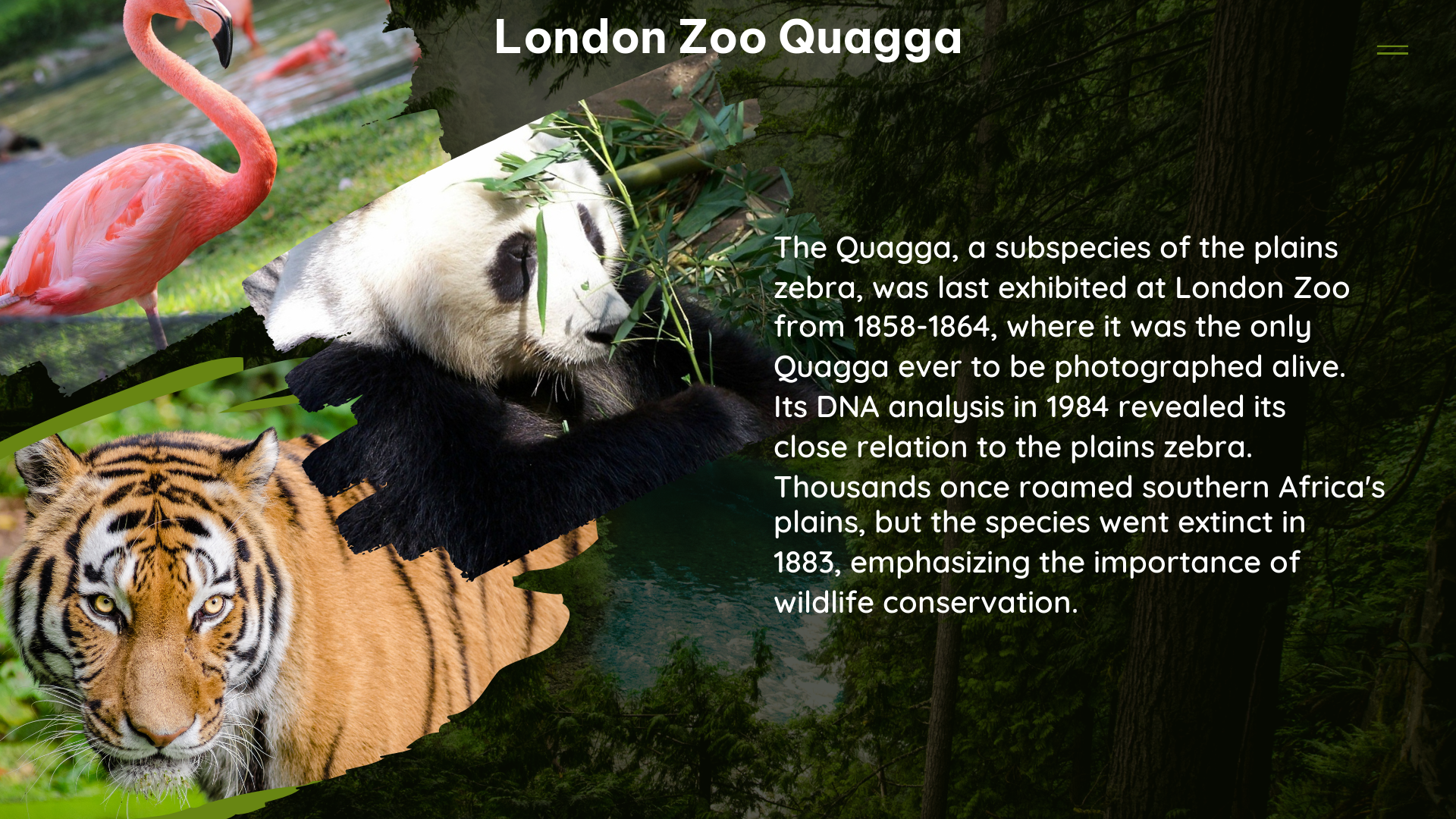The Quagga, a unique subspecies of the plains zebra, once roamed the vast grasslands of southern Africa. Sadly, this enigmatic creature fell victim to overhunting and habitat loss, becoming extinct in the wild by the late 19th century. However, London Zoo played a significant role in preserving the legacy of the Quagga, housing several specimens and capturing the only known photograph of a living Quagga.
The Quagga at London Zoo
London Zoo acquired its first Quagga specimen in 1831, and over the following decades, the Zoo exhibited three of these remarkable animals. The third and final Quagga in London Zoo’s collection died in 1872, just three years after the last known wild Quagga was shot in South Africa.
The Quagga’s time at London Zoo was not only significant for the species but also for science and conservation. In 1870, the Zoo’s staff captured the only known photograph of a living Quagga, providing a valuable visual record of this extinct subspecies.
Physical Characteristics of the Quagga
The Quagga was a unique member of the zebra family, with a distinct appearance that set it apart from its plains zebra cousins. Unlike the familiar black-and-white striped pattern of the plains zebra, the Quagga had a more subdued coloration, with a reddish-brown head and neck that gradually faded into a striped pattern on the front half of its body, transitioning to a plain, pale rear.
This distinctive appearance was likely an adaptation to the arid, semi-desert environments of southern Africa, where the Quagga once thrived. The reduced striping on the hindquarters may have helped the Quagga blend in with the surrounding landscape, providing camouflage from predators.
The Quagga’s Decline and Extinction
The Quagga’s downfall was largely due to human activities. As European settlers expanded into the Quagga’s native habitat, the animals were hunted for their meat, hides, and perceived competition with livestock. Additionally, the conversion of grasslands to farmland and the introduction of non-native species disrupted the Quagga’s ecosystem, leading to a rapid decline in their population.
By the late 19th century, the Quagga had been hunted to extinction in the wild. The last known wild Quagga was shot in 1883, and the final captive Quagga, a specimen housed at the Amsterdam Zoo, died later that year.
The Legacy of the Quagga at London Zoo

Despite the Quagga’s tragic demise, London Zoo’s role in preserving the species’ legacy cannot be overstated. The Zoo’s collection of Quagga photographs, including the only known image of a living Quagga, has become an invaluable resource for scientists and historians studying this extinct subspecies.
Moreover, the Quagga’s time at London Zoo has helped to inspire a greater appreciation for wildlife conservation and the importance of preserving endangered species. The Zoo’s efforts to showcase the Quagga and other iconic animals have played a crucial role in shaping the global movement to protect the natural world.
Famous Animals at London Zoo
In addition to the Quagga, London Zoo has been home to many other iconic animals throughout its history. These include:
- Guy the gorilla, who became a beloved figure at the Zoo and inspired a children’s book
- Obaysch the hippopotamus, the first hippo to be exhibited in the UK
- Goldie the golden eagle, a symbol of the Zoo’s commitment to conservation
- Winnie the bear, the inspiration for the beloved children’s character Winnie the Pooh
- Eros the snowy owl, a popular attraction that captivated visitors
These animals, along with the Quagga, have all played a significant role in shaping the history and legacy of London Zoo, inspiring generations of visitors and contributing to the global understanding of the natural world.
Conclusion
The Quagga’s story at London Zoo is a poignant reminder of the fragility of our natural world and the importance of conservation efforts. While the Quagga may be gone, its legacy lives on through the Zoo’s collection of photographs and the continued efforts of the Zoological Society of London to protect and preserve the world’s wildlife.
As we reflect on the Quagga’s history, we are reminded of the crucial role that zoos like London Zoo play in inspiring a lifelong love of animals and contributing to the scientific understanding of our planet’s biodiversity. The Quagga may be extinct, but its spirit lives on, inspiring us to protect the natural world for generations to come.
References:
– The Last Quagga in London Zoo (1864)
– Quagga at London Zoo (1870)
– Famous Animals at London Zoo
– The Only Quagga to Have Ever Been Photographed
– 1870 Quagga Mare at London Zoo
